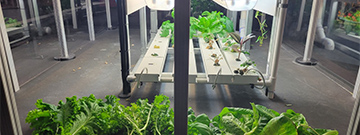
Nanotechnology
Have you ever used a cell phone or tablet and wondered, “How does a small device fit so much information?” Well, nanotechnology is making up a huge part of how we store information in today’s day and age. Not only in the technological world, but even medicine also uses nanotechnology. But what is nanotechnology, and how will it help us?
A nanometer is one billionth of a meter in size, approximately 100,000 times smaller than the width of a piece of hair. Nanotechnology is the process of creating new objects on such a small scale, an area of science in which researchers look at incredibly small atoms to see how they can be combined and modified to make them accomplish fascinating and useful feats. Nanotechnology is one of the most intriguing and rapidly evolving fields of science today.
Scientists may now construct their own nanostructures by rearranging the atoms of an item, resulting in new nanomaterials with unique features. These scientists, called nanotechnologists, use special microscopes called scanning electron microscopes (SEM) to discover parts of molecules and see how they can rearrange these parts to create something more useful.
The most promising innovation involving nanotechnology is arguably the nanochip. A nanochip is an electrical circuit made up of nanometer-scale components. You’ve probably heard of microchips, but nanochips are even smaller! Because of its small size, a nanochip needs extreme dexterity to function effectively. Nanochips are still an important technology in electronics, despite their small size. They are little digital devices that can perform complicated tasks. They’re also a fraction of the size of a human hair. This implies they’re simple to store on phones and other mobile devices.
But nanochips aren’t just for storing large amounts of information in technological devices. They can even be lifesaving! Ohio State University researchers are working on a nanochip that can modify cells within the body. Tissue nanotransfection is a technique that can mend tissues and regenerate whole organs. This innovative technique is absolutely noninvasive and comfortable. Nanochips may be employed in surgical operations in coming years, such as cardiac valve replacement. We will hopefully be able to see nanotechnology give us even more benefits as time goes on and more innovations are developed.
Source:
“Home: National Nanotechnology Initiative.” Home | National Nanotechnology Initiative, https://www.nano.gov/ ![]() .
.
Chris Woodford. Last updated: December 25. “Nanotechnology: A Simple and Fun Introduction!” Explain That Stuff, 25 Dec. 2021, https://www.explainthatstuff.com/nanotechnologyforkids.html ![]() .
.
Scientific Peer Review by Alysia Mandato
Aneri Shethji:
Aneri Shethji is a 10th grader at North Allegheny Intermediate High School. She is very passionate about science and writing and enjoys getting involved with the community. In her free time, Aneri spends time with friends and family and loves getting outside. She can’t wait to learn more about all that science has to offer, and help others learn it too!

On April 8, 2024, we will witness a mesmerizing event. A total solar eclipse is upon us, and here at the Science Center, we can explore this celestial phenomenon in many ways.
But first, what is this event? A ...

Climate change is a big deal. We’ve all seen news stories about greenhouse gas emissions, rising temperatures, and the hole in our ozone layer. However, what tends to sometimes be overlooked is climate change’s ...

In the captivating world of health care, a fascinating transformation is taking place—a rise in Artificial Intelligence, or AI! Picture a world where smart machines team up with doctors to revolutionize medicine, making ...

Hydroponics, a contemporary farming method, redefines how we grow plants, offering a fresh approach to cultivating crops that differs from traditional soil-based farming. This innovative technique doesn’t rely on soil ...

In our solar system, the eight planets—Mercury, Venus, Earth, Mars, Jupiter, Saturn, Uranus, and Neptune—are talked about more than anything. While the ...

Quantum computers are on the forefront of technological advancement. These machines, unlike any traditional computers you’re familiar with, harness the ...

The Earth is a spectacle of constant movement. Periodically, it commands our attention with displays of power—earthquakes. These events are tied to the intricate movements of the Earth's tectonic plates. Tectonic ...

Have you ever wondered how investigators in crime shows manage to identify suspects with such accuracy? Dusting for fingerprints isn’t always feasible in many cases, so the true answer lies in a different type of ...

Writers: Evan Allen, Ricardo Aguilar, Jillian Pensenstadler, Amelia Foley, and Ian Lisien
Once a center of industrial prowess, Pittsburgh has undergone a remarkable transformation, ...

Have you ever questioned what happens to the food you consume? Prepare yourself for a thrilling voyage as we go through your digestive system! We'll look at ...

When someone falls on their arm, they immediately head to the hospital to see if it is hurt. X-rays are used by doctors to examine your bones more ...

Even though dinosaurs became extinct about 65 million years ago, we know quite a bit about them, including what they ate, where they lived, and even what ...



